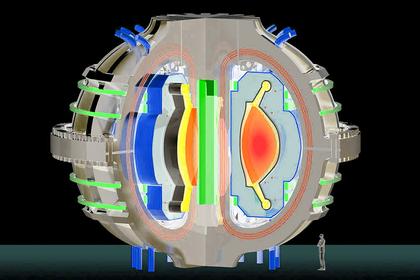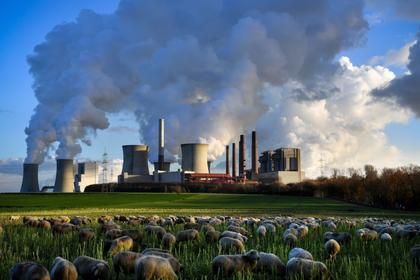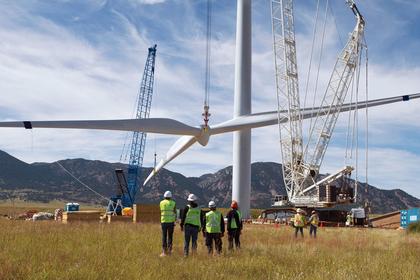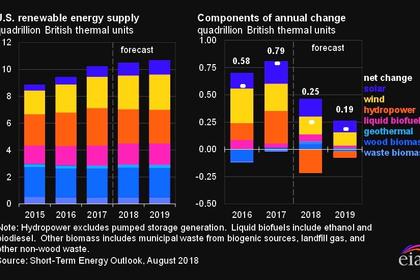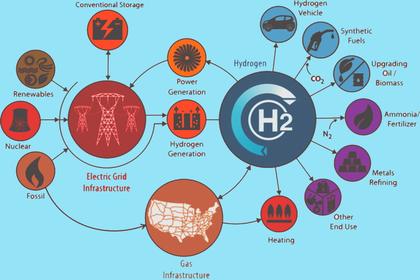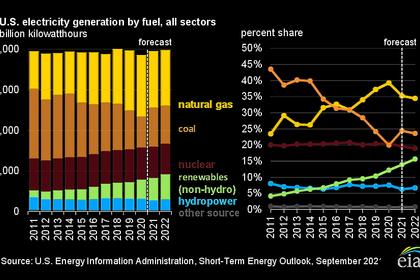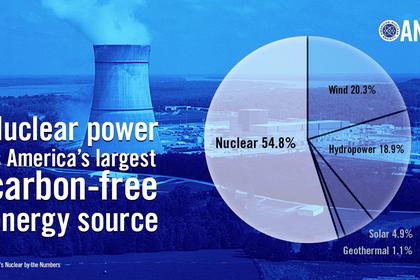
U.S. CLEAN ENERGY LAW
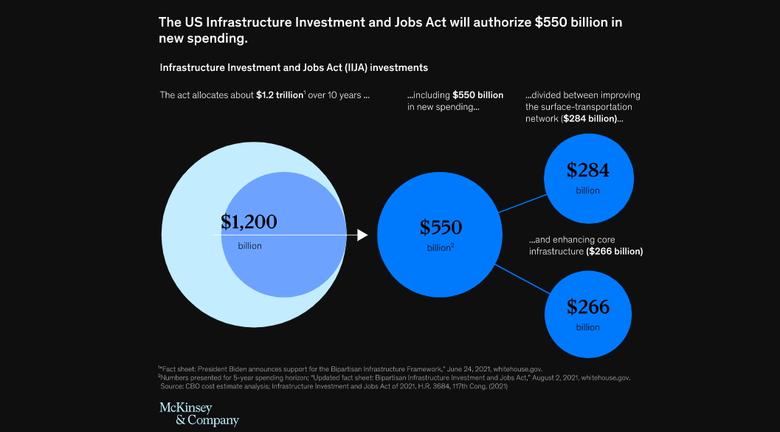
WNN - 16 November 2021 - US President Joe Biden yesterday signed into law the bipartisan Infrastructure Investment and Jobs Act (also known as the Bipartisan Infrastructure Deal). The USD1.2 trillion package is a key part of the president's Build Back Better agenda and contains a total of more than USD62 billion for the US Department of Energy (DOE) to deliver a "more equitable clean energy future", including preventing the premature retirement of existing nuclear plants and investing in advanced nuclear projects.
The bill, described by the White House as a "once-in-a-generation investment in our nation's infrastructure and competitiveness," was passed by the Senate in August and by the House of Representatives earlier this month. Amongst other things, it allocates USD6 billion to prevent premature retirement of existing zero-carbon nuclear plants. This funding, through the Civilian Nuclear Credit programme, will be available to plants that would otherwise retire and are certified as safe to continue operations and prioritises plants that use domestically produced fuel, the DOE said.
"Our nation already gets 27% of its power from decades-old nuclear and hydropower facilities. These are critical sources of clean power - but as they get older and more expensive to maintain, we risk losing these major sources of pollution-free energy and good-paying jobs. The Bipartisan Infrastructure Deal provides funding to ensure that we can keep these clean energy sources online," the DOE said.
The deal also provides some USD21.5 billion in funding for clean energy demonstrations and research hubs focused on the next generation technologies needed to help achieve the USA's goal of reaching net-zero by 2050. The vast majority of this is earmarked for clean hydrogen (USD8 billion) and carbon capture, direct air capture and industrial emission reduction (more than USD10 billion), with USD2.5 billion earmarked for advanced nuclear through the DOE's Advanced Reactor Demonstration Program (ADRP).
The ARDP was launched by the DOE in 2020 to speed the demonstration of advanced reactors through cost-shared partnerships with US industry. In October 2020, two companies - Terrapower and X-energy - were selected by DOE to demonstrate their advanced reactors by the end of the current decade. X-energy earlier this year signed a cooperation agreement with ARDP and the DOE for the project, which will enable it to build a commercial scale plant using its Xe-100 advanced high temperature gas reactor in Washington State through a partnership with Energy Northwest.
X-energy yesterday said the signature of the infrastructure bill is a "strong indicator" of the government's commitment to the policy direction and financial investment needed to deploy the reactors as soon as possible.
"This is a massive endorsement from the federal government of X-energy's first commercial deployment in Washington State and the opportunity for advanced nuclear energy in creating jobs as well as rebuilding US infrastructure," X-energy CEO Clay Sell said. "We are very appreciative of the continued strong bipartisan support from Congress and the President."
Arshad Mansoor, CEO of the Electric Power Research Institute, said the bill sends a "strong signal" as the USA works towards a clean energy future. "It makes historic investments to help build out electric vehicle and grid infrastructure, to ensure greater reliability and resilience, and drive essential R&D for hydrogen, nuclear, and other clean energy sources," he said. "The electric sector will play a crucial role in achieving the US government's climate goals, as many sectors of the economy - including transportation, buildings, and industry - will achieve large carbon emissions reductions through electrification and other low-carbon energy strategies where the electric sector will also have an important role to play.
"As we lay the groundwork now to make economy-wide carbon reductions in the coming decades, it's important to ensure the clean energy transition is equitable and sustainable, while keeping electricity accessible, affordable, and reliable for consumers in the US and around the world."
-----
Earlier:
